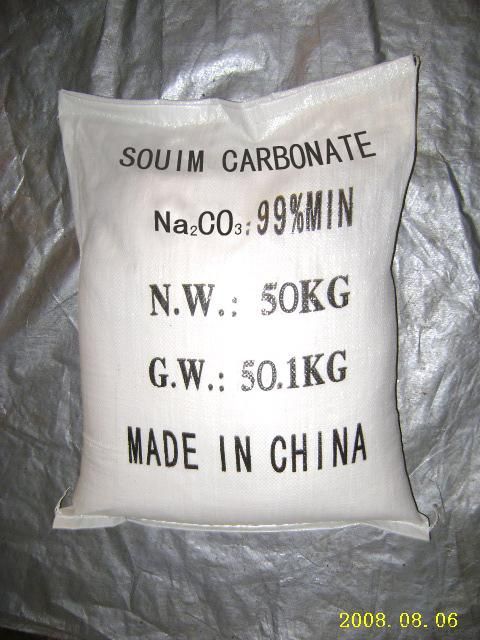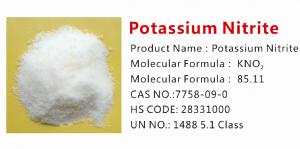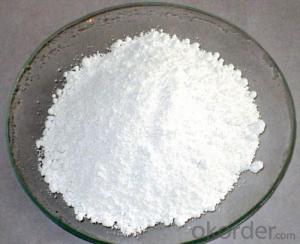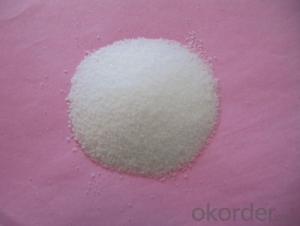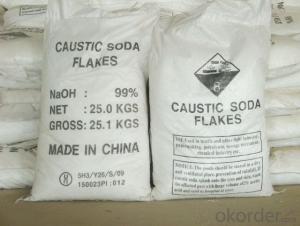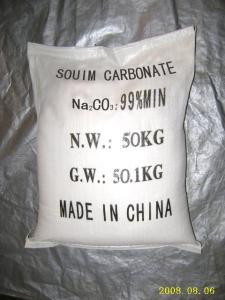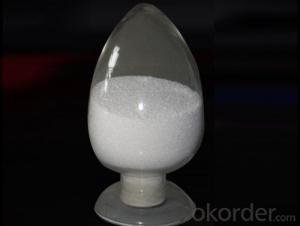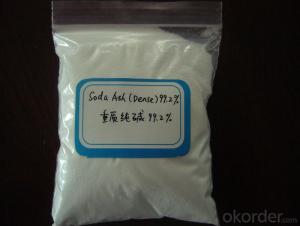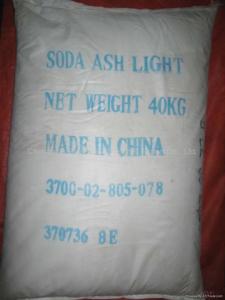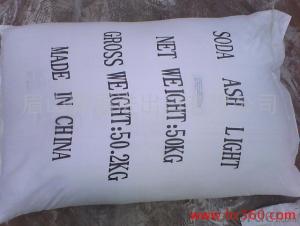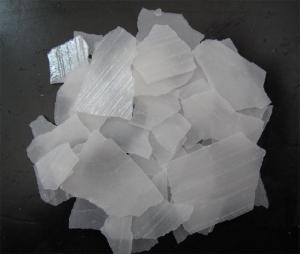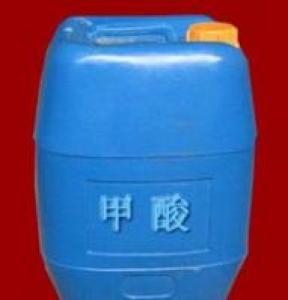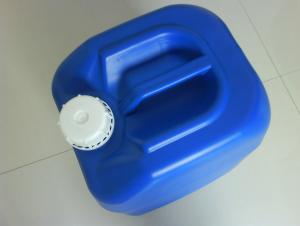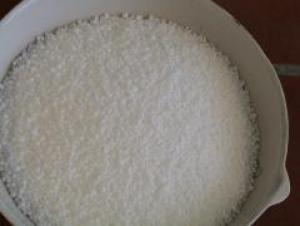Soda Ash Light 99.2% with High Quality and Good Quatation
- Loading Port:
- China Main Port
- Payment Terms:
- TT or LC
- Min Order Qty:
- -
- Supply Capability:
- -
OKorder Service Pledge
OKorder Financial Service
You Might Also Like
1. Structure of Soda Ash Description:
CAS NO.: 497-19-8
MF: Na2CO3
Grade Standard: Industrial Grade
Standard:GB210-92
HS Code: 28362000
Purity: 99%~99.2%
Packing&Delievery: 25/40/50kg/bag,750/1000 jumbo bag,plastic woven bag with PE liner
All year Delievery
2. Main Features of Soda Ash:
White powdered crystal, true specific gravity 2.533(20°C), easily soluble in water, most lubility at 35.4 °C. On exposure to air it easily absorbs moisture, carbon dioxide, and gradually to form a cake.
Keep away from sunlight and moisture,store in well ventilated dry place.
Soda ash is one of the basic materials for chemical industry. Mainly used for metallurgy, glass, textile, dye printing, medicine, synthetic detergent, petroleum and food industry etc.
3.Soda Ash Images
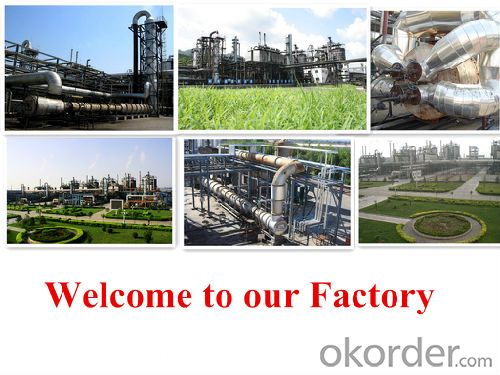


4.Soda Ash Specification
Item | Soda Ash Dense | Soda Ash Light |
Index | Index | |
Total alkali(quality fraction of Na2CO3 dry basis) | 99.2% min | 99.2% min |
NaCI (quality fraction of NaCI dry basis) | 0.70% max | 0.70% max |
Fe quality fraction (dry basis) | 0.0035% max | 0.0035% max |
Sulfate(quality fraction of SO4 dry basis) | 0.03% max | 0.03% max |
Water-fast substance in quality fraction | 0.03% max | 0.03% max |
Accumulation density(g/ml) | 0.90% min | |
Particle size, 180 µ m sieving residue | 70.0% min |
5.FAQ
Are you a factory or trading company?
----We are the import-export branch of the factory--CNBMGroup. There are production unit and sales unit in our Group. Production unit is only responsible for producing cargos. We are in charge of sales. Even there is a "trade" in our name,but actrually we are factories.
• What is the minimum order?
----One Metric Ton
• How can I get sample for testing?
----Kindly send us your address, we will send the sample to you.
• Where is your factory located? How can I visit the factory?
----Our factory located in Shandong, China. It is in the north of China as a sea-side city. It is one hour flight from Beijing.
- Q: anybody here knows the difference of organic iron salt (ex. F.gluconate) vs inorganic (ex. F.sulfate)?
- It it's organic, then the anion (the negative ion) is the conjugate base of an organic acid. If it's inorganic, then the original acid was inorganic (like H2SO4 making sulphates).
- Q: Where are the parts of the bryophyte absorb water and inorganic salts?
- Moss moss moss, moss Gang, moss root through the fake root absorption, that is, the use of cell penetration technology, moss Gang has evolved out of the root, so you can directly through the relatively low roots to absorb Oh
- Q: Can you please help me with this question and give me a website reference.
- Many of these materials enter the water through natural channels---minerals, salts and the like come from exposure to rocks, dirt and other inorganic materials.
- Q: Are plants absorbing water and inorganic salts only through root tip or wrong? The
- Plants through the leaves can also absorb water and inorganic salts, but the root tip is the main part of the plant to absorb water and inorganic salts.
- Q: What are minerals and trace elements?
- Minerals Trace elements are inorganic salts, which are widely found in nature - soil, sea water, animals, plants. It is to maintain the normal life of the human body indispensable. They are both the body of the composition, but also the activities of life participants and regulators, and therefore known as the elements of life, and they are the body can not synthesize their own nutrients.
- Q: citrate, What is the rationale for using a medium with this type of composition for the performance of the citrate utilization test?Thank you!
- Simmons Citrate Medium
- Q: Is calcium carbide inactive?
- Calcium carbide, the chemical formula for the CaC2, not inorganic salts. Salt refers to the metal ions and acid ions of the compound, calcium carbide does not have the corresponding acid.
- Q: What are the nutritional requirements for bacterial growth?
- For carbon: pathogens are mainly obtained from sugars.
- Q: The application of various inorganic salts in the human body?
- Iron is an essential trace element in the animal body and plays an extremely important role in the metabolism of animals.It is not only a component of a variety of compounds but also a variety of metabolic-related enzyme activities, and to a certain extent The immune function of the body.
- Q: therefore indigestible..that I should look for organic plant based trace mineral compounds..anyone care to comment?
- All trace minerals are "inorganic". That's what a mineral is. What the article means is that they are inorganic in the sense that the supplements just have mineral compouds, rather than being derived from a food source. That doesn't make them indigestible, but it can mean they aren't as readily absorbed. Vitamins and minerals are ALWAYS absorbed better when derived from food sources, such as eating a balanced diet, then they are by popping a supplement with a mineral compound in it. But if you need supplements, I don't know if there's such a striking difference between regular mineral supplements or "plant-based" whole food supplements. I don't doubt that whole food plant supplements are probably better, but I don't know that they're better to the degree that it makes the regular supplements "terrible". The best source is STILL diet.
Send your message to us
Soda Ash Light 99.2% with High Quality and Good Quatation
- Loading Port:
- China Main Port
- Payment Terms:
- TT or LC
- Min Order Qty:
- -
- Supply Capability:
- -
OKorder Service Pledge
OKorder Financial Service
Similar products
Hot products
Hot Searches


